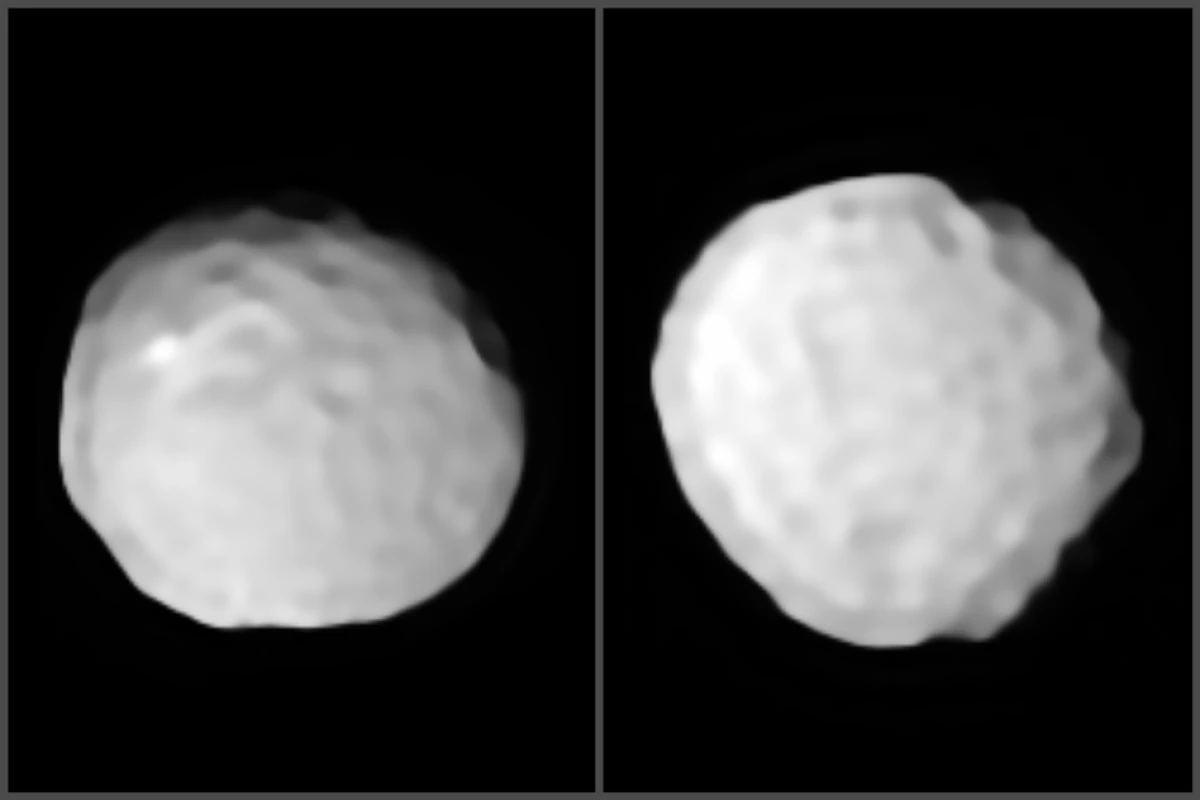Astronomers have taken the clearest-ever shots of asteroid Pallas, a large rock orbiting out beyond Mars. The new images revealed the surface of this tiny world to be heavily dotted with craters, to the point where it’s been dubbed the “golf ball asteroid.”
With a diameter of 512 km (318 mi), Pallas is the third-largest object in the asteroid belt, behind Ceres and Vesta. It has a pretty weird orbit too, which sends it on an angle of 35 degrees off-kilter compared to the path of most asteroids in the belt.
Although Pallas was originally discovered way back in 1802, it remains largely unexplored and under-studied. To try to change that, researchers examined it using the SPHERE instrument on the Very Large Telescope (VLT) in Chile. Over two observing runs, two years apart, the team took 11 images of Pallas at different angles. This was then used to create a 3D reconstruction of its shape and surface.
These images revealed several features of Pallas that had never been seen before. There’s a bright spot in its southern hemisphere, which may be a large deposit of reflective salts, much like those seen on Ceres.
But the most striking discovery (pun intended) was the sheer number of craters that mark Pallas. The astronomers spotted 36 craters larger than 30 km (18.6 mi) wide, which is impressive for such a small body. They estimate that craters cover more than 10 percent of its surface, making it the most heavily-cratered object in the asteroid belt. The reason for the golf ball nickname is pretty clear from the images.
To determine how Pallas ended up like this, the team ran simulations of the asteroid belt, with a focus on Pallas, Ceres and Vesta, and how they interacted with smaller debris. They found that Pallas’ weird orbit goes a long way towards explaining its pockmarked surface.
The object periodically smashes its way back through the asteroid belt on an angle, increasing the chances of collisions with other debris. And when it does, those collisions are up to four times more damaging than when something the same size strikes other objects.
“Pallas’ orbit implies very high-velocity impacts,” says Michaël Marsset, lead author of the study. “Pallas experiences two to three times more collisions than Ceres or Vesta, and its tilted orbit is a straightforward explanation for the very weird surface that we don’t see on either of the other two asteroids.”
Another feature the team noticed for the first time was a gigantic impact crater at Pallas’ equator, measuring some 400 km (249 mi) wide. This, the simulations suggest, could have been created by an impact with an object between 20 and 40 km (12.4 and 24.9 mi) wide, and would have sent fragments flying into space. Interestingly, this matches a trail of debris that’s known to follow Pallas around.
The research was published in the journal Nature Astronomy.
Source: MIT




